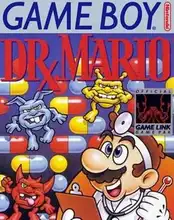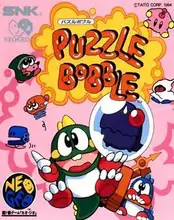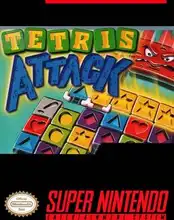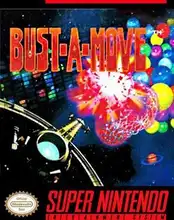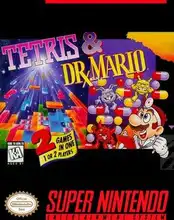Long before endless mobile feeds and in-app purchases, there was a simpler time for puzzle games. A time when lining up colorful blocks or quirky creatures on a screen could consume hours, test your reflexes, and subtly train your brain without you even realizing it. We're talking, of course, about the golden age of the tile matching puzzle.
These weren't just simple distractions; they were foundational experiences that defined a genre and captivated players in arcades, on early home computers, and handheld devices. Let's dust off those old cartridges and diskettes and remember why these games hold such a special place in retro hearts.
What Exactly is a Tile Matching Puzzle?
At its core, a tile matching puzzle game challenges you to manipulate pieces – often squares, blocks, or symbols – on a grid. The goal is to make them disappear or transform based on specific rules, most commonly by arranging a certain number of identical tiles adjacent to each other. Think lining up three or more of the same color or shape.
While the concept seems straightforward, the mechanics vary wildly. Some games have pieces falling from the top (like Tetris, though Tetris is technically a tile-rotating and dropping game, it heavily influenced the genre's popularity), others let you swap adjacent tiles (Bejeweled being a famous example), or even shoot pieces onto the board (Puzzle Bobble). The board can fill up, time can run out, or you might have limited moves – all adding layers of challenge to that simple matching mechanic.
The Classics: Icons of Retro Tile Matching
The roots of the digital tile matching puzzle stretch back to the mid-1980s. While non-digital games like Mahjong existed for centuries, the video game format brought new dynamism and speed.
- Tetris (1984): Okay, not strictly tile-matching, but its global phenomenon status and focus on manipulating falling blocks to clear lines laid crucial groundwork for the genre's popularity and mechanics. Its simple, addictive loop was a blueprint.
- Chain Shot! (1985): Often cited as an early direct ancestor, involving clearing groups of same-colored blocks.
- Columns (1990): Sega's answer to Tetris, featuring columns of three colored jewels falling, requiring you to match three or more horizontally, vertically, or diagonally. Simple, elegant, and highly addictive, especially with its catchy soundtrack.
- Dr. Mario (1990): Nintendo combined falling blocks with matching colored capsules to defeat viruses. It added a touch of character and strategic thinking beyond just clearing lines or matching colors.
- Puyo Puyo (1991): This Japanese series features cute, gelatinous creatures ("Puyos") that fall and pop when four or more of the same color connect. Known for its competitive multiplayer and chain reactions.
- Puzzle Bobble / Bust-a-Move (1994): Introduced the mechanic of shooting colored bubbles from the bottom of the screen to match and clear bubbles at the top. Another arcade classic with memorable characters and music.
- Shariki (1994) / Bejeweled (2001): Shariki is considered the first true "match-three" game, where you swap adjacent tiles. Bejeweled perfected this formula for the casual PC market in the early 2000s, becoming a massive success and spawning countless imitators, bridging the gap between pure retro and the modern era.
These games, with their vibrant pixel art, catchy chiptune soundtracks, and straightforward yet challenging gameplay, defined what a tile matching puzzle could be.
Why We Still Love 'Em: The Enduring Appeal
So why do these seemingly simple games stick with us?
- Pure, Addictive Loop: The immediate reward of clearing tiles, the satisfying sound effects, and the ever-present challenge of keeping the board clear create a powerful feedback loop.
- Easy to Learn, Hard to Master: The basic rules are usually explained in seconds, but mastering strategies, anticipating cascades, and playing under pressure takes real skill.
- Brain Training in Disguise: These games sharpen pattern recognition, spatial reasoning, quick decision-making, and even planning ahead – all while you're just having fun.
- Nostalgia Overload: For many retro gamers, these titles evoke memories of arcades, rainy afternoons with a Game Boy, or late nights on a glowing CRT monitor.
- Perfect for Short or Long Sessions: You can play a quick round or lose yourself for hours trying to beat your high score or clear just one more level.
They offer a refreshing contrast to the complex narratives and demanding mechanics of many modern games, providing a focused, meditative, yet exciting experience.
Reliving the Past: Where to Play Retro Tile Matchers Today
Feeling that nostalgic itch? Fortunately, many classic tile matching puzzle games are still accessible:
- GOG.com (Good Old Games): A fantastic source for DRM-free PC classics, often updated to run on modern systems. Look for titles like Tetris (various versions), Columns, or collections featuring older puzzle games.
- Archive.org: The Internet Archive has a vast collection of emulated games playable directly in your browser, including many DOS and arcade puzzle titles. It's a treasure trove for historical gaming.
- Emulators: For console classics like Dr. Mario (NES/Game Boy), Puyo Puyo (various consoles), or Puzzle Bobble (Neo Geo/consoles), emulators combined with legally obtained ROMs offer a way to play the originals on modern hardware.
- DOSBox: If you find classic PC versions (.exe or .com files) of old puzzle games, DOSBox is an essential tool for running them on Windows, macOS, or Linux.
Exploring these platforms lets you experience the original pixelated glory and understand why these games became legends.
The Evolution: From Arcades to Mobile
While our focus is retro, it's worth noting how the tile matching puzzle genre evolved. The match-three mechanic, popularized by Bejeweled, exploded in the mobile market with games like Candy Crush Saga. These often added levels, goals, power-ups, and social features, moving away from endless high-score chases towards structured progression.
Even newer variations like "merge" games (Triple Town, 2048) build on the core idea of combining tiles, showing the mechanic's incredible flexibility and enduring appeal across different platforms and design philosophies.
FAQ
- Is Tetris a tile matching game? While often grouped with them due to falling blocks and clearing lines, Tetris is more accurately described as a tile rotation and dropping game. True tile matching usually involves arranging existing tiles or shooting new ones to create matches of identical pieces.
- What was the first match-three game? Shariki (1994) is widely credited as the first game where you swapped adjacent tiles to make groups of three disappear, directly influencing Bejeweled.
- Are retro tile matching games still fun? Absolutely! Their simple mechanics and challenging difficulty curves hold up incredibly well. They offer a pure, unadulterated puzzle experience.
- Are there modern games like the old ones? Yes, many modern indie games and even some mobile titles try to capture the spirit and mechanics of the retro classics, often with updated graphics but retaining the core gameplay loop.
The Legacy Lives On
The tile matching puzzle genre, born in the pixelated crucible of the 80s and 90s, continues to thrive today in various forms. But for many of us, the magic lies in those early pioneers. The click-clack of falling blocks, the satisfying pop of cleared tiles, the race against the clock – these are the memories that make the retro tile matching puzzle a timeless classic.
So, fire up an emulator, visit Archive.org, or check GOG.com. Reconnect with these gems and experience the simple, profound joy of lining up little digital tiles. You might just find your new old favorite.

